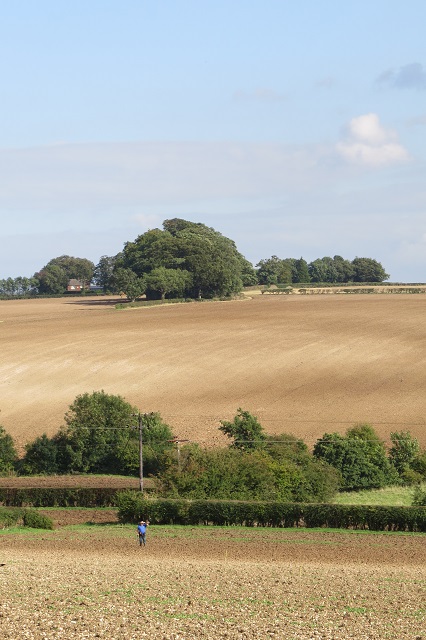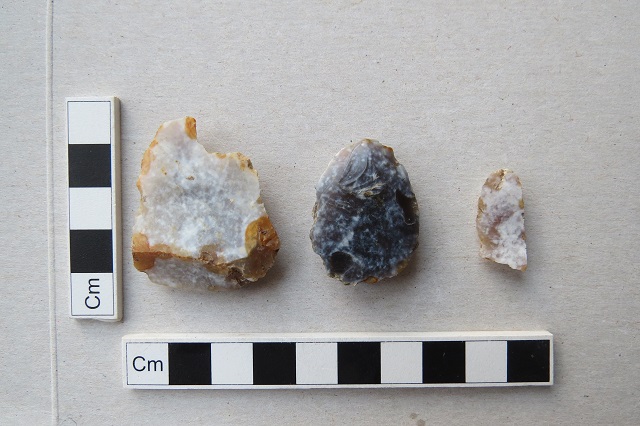While we are focused this season on exploring our Roman period site near Binbrook the valley we are working in contains a wealth of evidence for earlier use and occupation. Along from our site is the long barrow known as Cromwell’s Grave. This monument will have had a very long history of use through the Neolithic period and later. The Ash Hill Long Barrow, also nearby but on the opposite side of the valley, was still receiving burials in the Viking period! Before our site was occupied in the Roman period we know the immediate landscape was heavily used in prehistory. Mesolithic hunters following seasonal movements of wild herds doubtless used the valley as a routeway and for water and rest.
Flint tools of the subsequent Neolithic and Early Bronze Age are well attested on the Wolds and relate to the era when people were shifting to more settled agriculture, marking the land with funerary and other monuments. The fields we have studied at our site have yielded more struck flints dating to this era than any other sites we have examined. A polished axe is also recorded from the site and this tool will have been a “hi-tech” instrument employed to fell trees to transform the landscape for farming, as one of the package of changes occurring at the time.
Here we see a selection of flints gathered last year by systematic fieldwalking plus some of the new discoveries this year.

A selection of flint from last season collected during systematic survey near the beck. Can you spot the tools and flakes?

Some flints from this year. Dorsal view of two scrapers and a struck flake. The scraper on the left is notched and might have been used for cleaning sinews or similar activities.
On the east side of our large pit, Feature 2020, there is a linear arrangement of post holes. A practical explanation, if this feature is Roman, would be that these were screening the pit to avoid people and animals accidentally falling in. However this straightforward interpretation is seemingly unlikely in this case for these postholes appear from their clean soil fills to be much earlier in date. The clay fillings and sealing deposit above than are more typical of prehistoric soils and reminiscent of those dated to the Neolithic at the Nettleton/Rothwell site (Willis 2013). So, it would seem likely that this post-hole feature – a palisade? – could well be contemporary with the long barrows and these struck flints we have recovered. Whether it represents a land division, ceremonial monument or settlement enclosure is not clear, and we have not seen a sign of it on our geophysical evidence. Although all the fill layers have so far produced Roman material it is just possible that Feature 2020 dates originally to this prehistoric time period; since we have not yet reached the bottom of the the feature this question remains open.
The Dig Team




